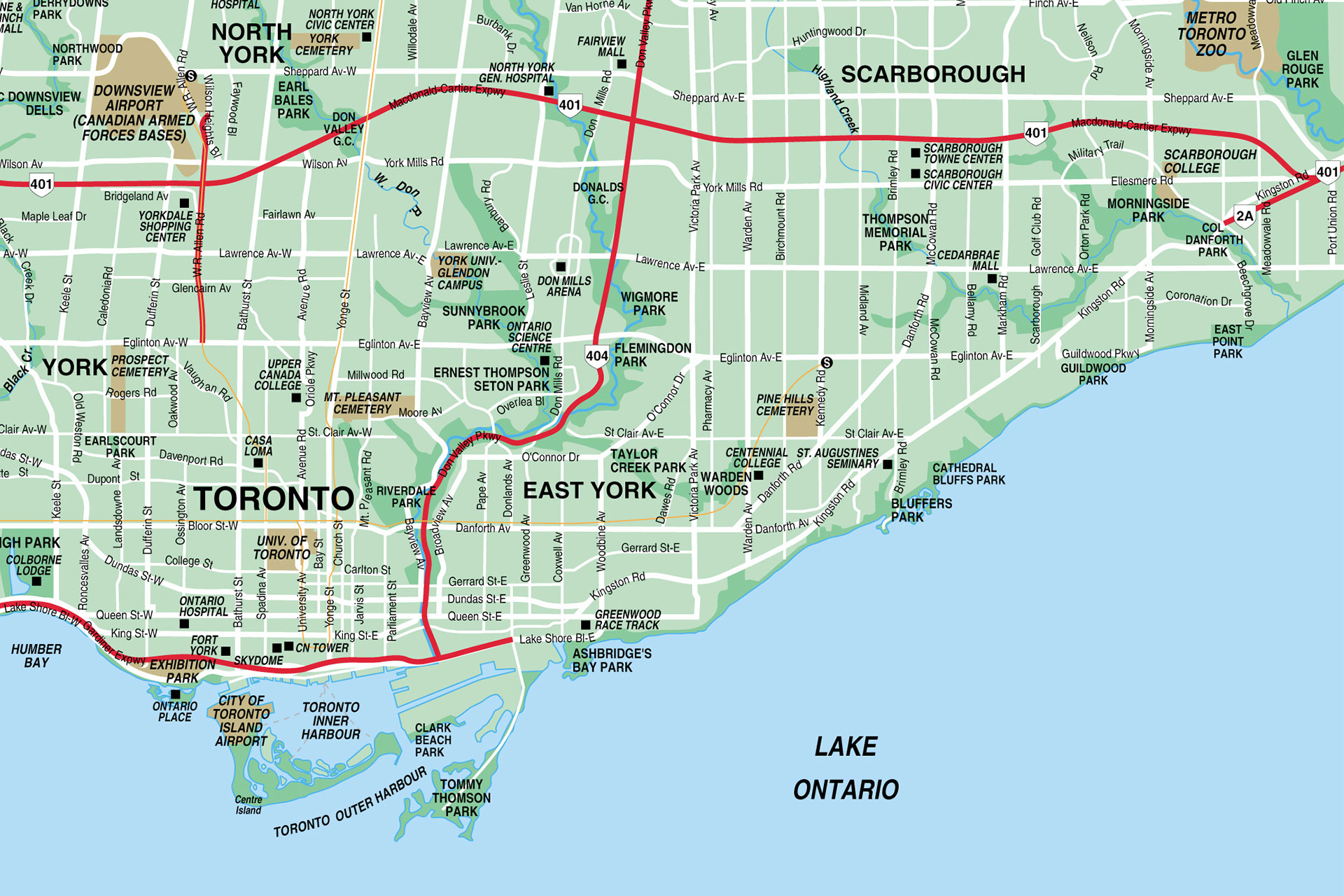Part II: Toronto’s Real Estate Workforce by the Numbers- People, Places, and Firm Size
Mahjabeen Mamoon
26 October 2025

Last month, we kicked off our multi-part series on Toronto’s real estate industry with Part I: The Human Engine of Toronto Real Estate a closer look at who actually makes this sector run, what it takes to get licensed, and how job postings hint at the shifting expectations for roles like agents, brokers, and administrators.
This month, in Part II, we zoom out and map the landscape. Using data from the Canadian Business Counts and the 2021 Census, we explore where real estate offices are concentrated across the Toronto CMA, and how self-employment remains the backbone of the industry. We also take a closer look at the people behind the deals- breaking down who’s working in this space by gender, age, and racial background. It’s a continuation of our effort to unpack what makes Toronto’s real estate sector so distinct, and who’s powering it from the inside out.
Toronto’s Real Estate Workforce: Powered by Small Teams, Big Hustle

According to the latest Canadian Business Counts data, Toronto alone is home to over 1,300 active real estate offices with employees. As of December 2024, 86% of all real estate offices in the city run with a team of just 1 to 4 people. That’s over 1,100 tiny yet mighty offices. Add another 7% with 5 to 9 staff, and suddenly you’re looking at a sector that thrives on lean teams, personal hustle, and hyperlocal know-how.
Whether it’s a solo broker working out of a home office in Leslieville, a two-person team sharing space near Yonge and Eglinton, or a boutique firm with a handful of agents covering Scarborough, this is what real estate looks like in Toronto. Figure 1 maps out the employee size breakdown, and the message is clear: big real estate brands may dominate the billboards, but small offices dominate the landscape.
Only 47 offices citywide have 10-19 employees, and just 30 offices employ between 20-49, the kind of mid-sized firms that might have a dedicated marketing person or office manager but are still tight enough to feel like family. And if you’re looking for offices with 100+ staff? You can count them on one hand.
For jobseekers, especially those fresh out of licensing programs or looking to pivot into real estate, this means you’re likely entering a world where your network matters more than your resume, and where most opportunities are found through relationships and not necessarily job boards.
For those in workforce development or training, it’s a reminder: Toronto’s real estate sector is built on micro-enterprises. That means training for business skills, digital marketing, self-employment tax basics, client management software, and entrepreneurial mindset isn’t a bonus- it’s essential.
Real Estate’s Lean Toward Self-Employment

According to the 2021 Census, a remarkable 86% of real estate agents and salespersons in the Toronto CMA are self-employed, a stark contrast to the 17% average across all occupations (see Figure-2). This isn’t just a statistical outlier; it reflects the very DNA and business model of the industry. Unlike most professionals who clock into 9-to-5 jobs with steady salaries, real estate agents often operate more like entrepreneurs. They juggle client meetings, open houses, listings, and social media content all on their own terms. For instance, a seasoned Toronto agent might spend their morning staging a condo in Liberty Village, afternoon replying to client DMs on Instagram, and evening hosting a virtual showing for a downtown loft. It’s all hustle, all the time.
But this autonomy comes at a price. There’s no guaranteed paycheck at the end of the month, no employer-sponsored dental plans, and no built-in vacation days. Many rely heavily on their own ability to generate leads, close deals, and manage finances. It’s not uncommon for new agents to take on side gigs while they work to establish themselves in the market. Anecdotal evidence from the industry itself suggests that this juggling act is especially common in the early years, when commissions are sporadic and marketing costs are high.
From a workforce development lens, real estate agents aren’t just workers they’re business owners. Job seekers must prepare for the realities of entrepreneurship, and training programs must go beyond licensing to include financial literacy, marketing, and business planning. As one agent candidly put it in a recent webinar: “You don’t just sell homes- you sell yourself every single day.”
A Gender Snapshot of Toronto’s Real Estate Workforce

Walk through any open house in Toronto and there’s a good chance you’ll be greeted by a woman- confident, driven, juggling clients and calls while giving you a tour of your maybe-dream-home. And yet, when we zoom out to look at the bigger picture, men still slightly outnumber women in the city’s real estate sales force. According to the 2021 Census, men make up 57% of real estate agents and salespersons in the Toronto CMA, while women represent 43%.
Anecdotally, more and more women are entering the field often drawn by the promise of flexibility, entrepreneurial freedom, and relationship-building that real estate offers. You’ll find women balancing showings with school pick-ups, or turning part-time real estate into full-time careers. While women are clearly a strong and growing force in the industry, a gender gap remains. As the industry evolves in response to changing market conditions and client expectations, increasing female participation could also contribute to greater diversity of perspectives and a more inclusive workforce.
While definitive data is limited, there is a widely held and consistent anecdotal understanding both in Toronto and more broadly that women are more likely to work in residential real estate, whereas commercial real estate continues to be male-dominated. In Toronto, this distinction may be even more relevant given that the city accounts for nearly half of all office space in the CMA, suggesting a higher concentration of commercial activity and by extension, commercial agents within the city.
In the U.S., the gender imbalance in commercial real estate is well-documented[i], with women making up a much smaller share of commercial agents compared to residential. While we don’t yet have robust Canadian data to confirm a similar pattern, early observations and industry conversations suggest that a comparable dynamic likely exists here.
What The Age Profile Really Tells Us About Toronto’s Real Estate Workforce

The age distribution chart (see Figure-4) for real estate agents and salespersons in the Toronto CMA tells a revealing story not just about who’s in the business, but when people tend to enter it. It reflects a system where entry costs are high (education, licensing, unpaid startup periods), while exit pressures are low (flexible hours, self-employment).
What jumps out first is how few young people those aged 15 to 24 are working in real estate. Just 2%, compared to 10% across all occupations. Even in the 25 to 34 age group, real estate lags far behind: only 14% of real estate agents fall in this range, compared to 24% across all sectors. That’s a major gap. In a place like Toronto where the cost of living is high and careers often start early out of necessity; this suggests real estate isn’t a typical first career. The estimated average age of real estate agents and salespersons in the Toronto CMA as of Census 2021 is 48 years. Clearly it is the lack of a steady income when you’re starting out, or the high cost of networking and self-promotion that act as a barrier. But it could also reflect a broader truth: real estate is often a second or third career- a pivot point for those with lived experience, people skills, and a desire for more control over their time and earnings.
The majority of real estate agents, about 72% fall between the ages of 35 and 64. The largest concentration is in the 45 to 54 age group, where 26% of agents land, compared to 22% across all occupations. These are prime working years where people may be transitioning from other industries, have built up savings to take on the risks of self-employment, or finally feel confident enough in their networks and local knowledge to make real estate work. It’s also likely when professional confidence and life stability are highest and when many are buying or selling their own homes, making them more personally invested in the real estate ecosystem.
Here’s where things get even more interesting: 10% of real estate agents are 65 to 74 years old more than double the share across all occupations. Real estate allows older professionals to work part-time, stay connected to their communities, and draw on decades of experience without the constraints of a 9-to-5 job. In a market like Toronto where trust, reputation, and referrals go a long way, these late-career professionals often have the edge. It’s also worth noting that 2% of agents are over 75, a number small on paper but meaningful in what it says about longevity and flexibility in this field.
The Faces Behind the For Sale Signs: Diversity in Ontario’s Real Estate Scene

Ever wondered who’s actually behind those real estate flyers in your mailbox or the smiling faces on “For Sale” signs across Ontario? In the Ontario’s real estate landscape, diversity is certainly present but not always as broad as it might appear. According to the 2021 Census, among real estate agents who self-identify as part of a visible minority[ii] group in Ontario, a full 66.6% identify as either South Asian (35.6%) or Chinese (31.0%). That’s two out of every three visible minority real estate professionals in the province!
It’s not hard to see the local connections. South Asian agents have a strong foothold in communities like Brampton, Mississauga, and parts of Scarborough neighbourhoods where cultural familiarity and multilingual communication are often key to building trust. Meanwhile, Chinese realtors have long had deep community ties in high-demand markets like Markham, Richmond Hill, and parts of North York. Many are fluent in Cantonese or Mandarin and bring cultural insights that can be invaluable to first-time homebuyers navigating Toronto’s complex housing market.
Other groups: West Asians (9.4%) and Black real estate professionals (5.8%) bring rich perspectives and strong networks, especially in diverse corridors like Thorncliffe Park, Etobicoke, and York South-Weston. And while smaller in proportion, we also see dedicated representation from Arabs (3.8%) and Latin Americans (2.8%), Southeast Asians, Koreans, Filipinos, and even those identifying as multiple visible minorities[iii] . But some communities, like Japanese Canadians (0.3%) or those grouped under other visible minority[iv], barely register in the stats.
But what happens when we zoom out and compare this to who’s working across all occupations in the province’s visible minority workforce? South Asians still lead at 33% of all visible minority workers in Ontario, and Chinese workers come in at 16%. So both groups are actually overrepresented in real estate compared to their overall share of the visible minority workforce.
Black workers, for instance, make up a significant 15% of all visible minority workers across Ontario but only 5.8% of visible minority real estate professionals. Filipinos make up 9% of the visible minority labour force, but just 2% in real estate. Similar underrepresentation exists among Latin American, Arab, Southeast Asian, and Korean communities. These gaps raise important equity questions: are some groups facing barriers to entry in the industry whether due to limited access to start-up capital, or mentorship opportunities? Or is real estate simply not seen as a viable or attractive career path in some communities, perhaps due to a lack of visible role models or perceptions of risk?
One group that stands out in the opposite direction is West Asian professionals. Though they represent just 4% of visible minority workers across all occupations, they make up a higher 9.4% of real estate agents more than double their general labour force share. This could be a reflection of concentrated settlement patterns and the power of hyper-local networks in neighbourhoods like Don Mills, or parts of Willowdale, where trust and shared cultural identity are strong drivers of business success.
In reality, the share of Ontario’s real estate workforce is quite concentrated. South Asian and Chinese professionals make up the bulk of that diversity leaving many other communities underrepresented or missing altogether from the sector’s public face. In a city like Toronto where over half the population identifies as a visible minority this concentration matters. The real estate workforce may mirror some aspects of the city’s population, but there’s still room to grow when it comes to truly representative diversity, especially in leadership roles, boutique brokerages, and luxury segments. Because behind every “For Sale” sign is a person and in a multicultural city like ours, who gets to hold that sign (and the keys) matters.
Where Are the Real Estate Offices? A City-by-City Look Across the Toronto CMA

Toronto dominates the real estate landscape, with more than 1,300 active offices employing staff-outpacing Brampton, Mississauga, Markham, and Vaughan combined. It is where the real estate hustle truly lives driven by its dense housing market, commercial infrastructure, and regulatory centrality. It reflects what we see every day on Bay Street, Queen West, or even tucked between local cafes on the Danforth: offices buzzing with agents navigating listings, staging strategies, and closings. Figure 6 offers a snapshot of how these offices are spread across the Toronto CMA, and not surprisingly, the rest of the 20+ municipalities collectively account for just 21% of real estate offices with employees.
Of course, smaller places like Mono, Bradford, and Uxbridge each have fewer than 10 offices not because they’re any less important, but because the volume of listings, density of population, and demand for brokerage services are simply on a different scale in Toronto. For anyone eyeing a career in real estate especially fresh grads from programs like Humber College’s Real Estate Salesperson Program, the implication is clear: Toronto offers the deepest pool of potential employers, colleagues, mentors, and clients
Market Movements and Income Outlook for Real Estate Agents in Toronto

Toronto’s commercial real estate market has been shifting steadily over the past few years. City of Toronto’s office vacancy rates[v] have nearly quadrupled since 2019, going from just over 4% to hovering around 18% in 2024-2025. And while there’s a slight dip in Q2 2025, it’s still a tough market out there. Also, the industrial vacancy rates have climbed steadily from just 0.4% in late 2021 to 3.6% by Q2 2025 a nearly nine-fold increase in just under four years.
According to a latest report[vi] by Toronto Regional Real Estate Board (TRREB), between Q2 2024 and Q2 2025, Toronto’s commercial real estate market showed signs of softening. Total leased space declined across industrial, commercial/retail, and office segments, while lease rates also dropped in most categories. Sales activity was similarly subdued, with fewer commercial property transactions taking place year-over-year. These shifts inevitably affect real estate agents, many of whom rely on commission-based income tied to transaction volume and value. With fewer deals and lower lease and sale prices, earnings potential may be under pressure. Navigating this downturn requires adaptability, stronger client relationships, and potentially rethinking which real estate niche to specialize in.
While the commercial real estate market followed a more subdued trajectory, August 2025 brought a slight year-over-year increase in home sales[vii] (up 2.3%), alongside a more notable rise in new listings (up 9.4%), providing buyers with greater choice across market segments. This elevated inventory contributed to some downward adjustment in average selling prices. For real estate agents, this market dynamic may translate into a mixed impact on income. While improved affordability and a more active summer market could support transaction volumes, the slight moderation in selling prices means commissions per sale may be somewhat lower compared to last year. On balance, a well-supplied and stable market offers continued opportunities for agents, especially if future interest rate cuts stimulate demand heading into the fall season.
End Notes
[i] https://crewnetwork.org/resources/gender-diversity-research/benchmark-studies/gender-and-diversity-in-commercial-real-estate-2020?utm_source=chatgpt.com
[ii] The visible minority variable includes data for 13 derived groups: South Asian; Chinese; Black; Filipino; Arab; Latin American; Southeast Asian; West Asian; Korean; Japanese; Visible minority, not included elsewhere (n.i.e.) referred to as other visible minority in this report; Multiple visible minorities; and Not a visible minority. There is also a subtotal provided for the “Total visible minority population,” which aggregates counts for the first 12 groups.
[iii] The category “Multiple visible minorities” includes respondents who checked two or more mark-in circles associated with groups designated as visible minorities. For example, respondents who checked both “South Asian” and “Black” are included in the “Multiple visible minorities” category. In addition, this category includes respondents who reported a combination of mark-in or write-in responses associated with two or more visible minority groups. For example, a respondent who checked “South Asian” and had a write-in response of “Nigerian” would be included in the “Multiple visible minorities” category.
[iv] Other Visible Minority category includes persons who provided responses that are classified as a visible minority but that cannot be classified with a specific visible minority group. Such responses include “Guyanese, Pacific Islander, Polynesian, West Indian, Tibetan
[v] https://www.toronto.ca/city-government/data-research-maps/toronto-economy-labour-force-demographics/toronto-economic-dashboard/#
[vi] https://trreb.ca/wp-content/files/market-stats/commercial-reports/cw25Q2.pdf
[vii] https://trreb.ca/wp-content/files/market-stats/market-watch/mw2508.pdf
Author
-

Mahjabeen Mamoon is the Senior Manager of Research at Toronto Workforce Innovation Group.
View all posts